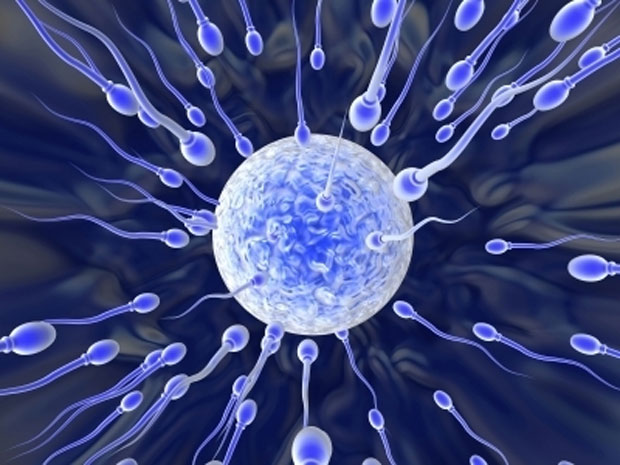Male Birth Control Shots Lower Pregnancy Odds, But Have Side Effects

An experimental type of male birth control that uses shots of hormones to lower men's sperm counts works relatively well to prevent pregnancy, according to a new study.
However, the study had to be stopped early because of the high rate of side effects seen in men who got the shots. These side effects included depression and other mood disorders, according to the study, which was published today (Oct. 27) in the Journal of Clinical Endocrinology & Metabolism.
The findings mean that more research is needed before this method of contraception could become available to men, said study co-author Dr. Mario Philip Reyes Festin, a medical officer on the human reproduction team at the World Health Organization in Geneva.
"Although the injections were effective in reducing the rate of pregnancy, the combination of hormones needs to be studied more to consider a good balance between efficacy and safety," Festin said. [Birth Control Quiz: Test Your Knowledge]
Hormonal birth control methods for women— including pills, patches, rings and intrauterine devices (IUDs) — have been available for years. But men's options for controlling their fertility are limited to condoms and withdrawal during intercourse, which are less effective than hormonal birth control, the researchers said. Men can also have a vasectomy, but this method is invasive and often not reversible.
Although some previous studies have looked at the effectiveness of hormonal birth control in men, efforts to develop a commercial product have stalled, the researchers said.
The new study involved 320 healthy men ages 18 to 45 living in seven countries: Australia, Chile, Germany, India, Indonesia, Italy and the United Kingdom. All of the men were in monogamous, long-term relationships with women, and none of the couples had a condition that would prevent them from getting pregnant.
Get the world’s most fascinating discoveries delivered straight to your inbox.
The men received the hormonal shots every eight weeks, for up to a year. The shots contained two hormones: a form of testosterone called testosterone undecanoate, and a form of progestogen called norethisterone enanthate. Both hormones suppress sperm production, and they are used together in order to reduce side effects. The researchers administered the hormones to the men in two separate shots.
During the first 26 weeks of the study, couples were told to use other forms of nonhormonal birth control to prevent pregnancy while the men's sperm counts were lowered. The researchers' goal was to lower men's sperm counts to a concentration of 1 million sperm per milliliter of semen, or less. For a man to be considered fertile, the concentration of sperm needs to be at least 15 million sperm per milliliter of semen.
The shots worked to suppress sperm production in 96 percent of the men who stayed in the study.
After the 26-week mark, the couples were told to rely on the shots for contraception. Of the 266 men who participated in this phase, four had a female partner who became pregnant. This translates to a pregnancy rate of about 1.5 pregnancies per 100 people who stayed in the study.
The overall failure rate of the shots — which included not only the pregnancies but also the men whose sperm production was not lowered enough, and those whose counts bounced back after they were lowered — was 7.5 percent. This is comparable to the effectives of other forms of hormonal contraception for women. For example, during a given year, about 9 percent of women who use birth control pills become pregnant, according to the Centers for Disease Control and Prevention.
After the shots were stopped, about 95 percent of the men saw their sperm count return to normal levels within a year. But five men needed to wait a year and a half before their sperm count returned to normal, and one man's sperm count never fully recovered, even four years after the shots were stopped.
Overall, more than 75 percent of the men in the study said they would be willing to use this method of contraception if it became available in the future.
However, some men experienced side effects, including acne, pain at the site of the injection, increased sex drive and mood disorders. About 60 percent of the overall side effects were found to be related to the hormonal shots. Most of these side effects were mild to moderate, but the study was stopped in 2011 out of concern over these side effects, particularly the mood disorders, which included mood swings and depression. Overall, about 5 percent of the participants experienced mood swings, and 3 percent experienced depression.
Two men experienced depression that was considered severe, and in one case, the man intentionally overdosed on acetaminophen (but he did not die).
It's possible that changing the timing of the shots could lead to fewer side effects, particularly those related to mood, the researchers said.
The study was funded by the United Nations/World Health Organization, and the nonprofit organization CONRAD (Contraception Research and Development), using funds from the Bill & Melinda Gates Foundation and the U.S. Agency for International Development. The hormonal shots were provided by the pharmaceutical company Schering AG, which has since merged with Bayer Pharma AG.
Original article on Live Science.

Rachael is a Live Science contributor, and was a former channel editor and senior writer for Live Science between 2010 and 2022. She has a master's degree in journalism from New York University's Science, Health and Environmental Reporting Program. She also holds a B.S. in molecular biology and an M.S. in biology from the University of California, San Diego. Her work has appeared in Scienceline, The Washington Post and Scientific American.



